A Balancing Act: Product Leader as Coach
Why Product Leaders Should Strive to Become Leader Coaches—And What This Means for You
Illustration by artinker.com for Kate Leto
I recently kicked off the first cohort of my new short course, Essential Coaching Skills for Product Leaders. The course is designed to demystify coaching techniques that professional coaches use with clients and break them down to a level that busy product leaders can more naturally integrate into their leadership toolkit.
Finding a way to bring what I have learned from my training to become an accredited coach into the product leadership space has been something I’ve wanted to do for a long time. From my years as a product leader, consultant, and now coach, I’ve seen firsthand the challenges that leaders face as they try to juggle needs of team, stakeholders, bosses, peers and end users.
With the best of intentions, they try to answer all the questions that come their way, but often slip into a more traditional “command and control” approach that doesn’t resonate with what their teams and colleagues need. Harvard Business Review reports that millennials want feedback 50% more than other generations and look to their managers for guidance in their personal development. And being “a good coach” is Google’s number one trait in their list of top management skills.
Plus, when leaders take on everyone else’s problems and try to solve them, they’re depriving their direct reports of the opportunity to develop their own problem-solving skills—and engaging in a work pattern that’s more likely to leave leaders burnt out and resentful.
While the business world at large has begun to see the value of coaching as a leadership skill, I've yet to see this idea take hold within the product community.
Still, pulling together the content and practices for the course has made me stop and really consider the most fundamental question: What does it mean to be a product leader coach?
Let’s start by looking more closely at what it means to be a coach. The International Coaching Federation defines coaching as:
“Partnering with clients in a thought-provoking and creative process that inspires them to maximise their personal and professional potential.”
For product leaders specifically, taking on a coaching role can feel like uniting two seemingly opposing worlds. A typical product leader is juggling endless tasks and meetings and has little time for reflection, while a coach is focused on empowering individuals and cultivating curiosity rather than quick solutions. It also involves transforming communication styles from the typical leader's "Do as I say" to the coach's "What do you think?"
The chart below offers a quick summary of how coaching differs from traditional leadership communication styles.
I’m not saying that the traditional directive style is a completely wrong approach to leadership. Command and control is a legitimate leadership behaviour that makes sense to use at times of crisis and chaos. But, over reliance on it creates an instinctive challenge to the leader coach mindset.
How can you start to integrate a true coaching habit into your daily interactions?
Start with that idea of “partnership” that leads off the ICF definition of coaching. To me, it means that when I enter a coaching conversation of any kind, it’s happening among two people with equal agency. As a coach, I am not better or smarter. I don’t know it all. I am there to be present, listen without judgement, and help the other person figure out a challenge and how they can move forward in a way that is aligned with their own values.
I know that is easier said than done, but here are three things that you can try to create this sense of partnership.
Slow down and get curious. Next time someone seeks your help in finding a solution, take a moment to pause and remember that they are as capable as you are. Shift from being a know-it-all to embracing curiosity. Instead of immediately offering answers, slow down and ask questions that assist them in clarifying the true nature of their challenges. Try something like: “What have you tried so far?” or “What is the real challenge for you here?” “What are your options?.” And, don’t hold back from asking your partner to think of more options or ideas by asking, “And, what else?” Our first response isn’t always the one to move on.
Consider how you’re meeting. Are you and your partner both sitting? Both standing? Get on the same level. Are you sitting behind a desk with your partner far away on the other side? Find a way for you to sit next to each other for the conversation. Create a space that allows for that physical feeling of being on an equal playing field.
What’s driving you? This is a perfect opportunity to reflect on what might be driving you to rush to solve the problem or answer the question. Are you trying to be the hero and save the day? Are you playing the role of victim by taking on too much responsibility? (See my previous article on the Karpman drama triangle for more on this topic.
This shift in thinking and behaviour isn’t easy. That’s why I created the Product Leader as Coach course to introduce essential skills of coaching and offer a safe space to practise. If this is something that appeals to you, sign up to join the waiting list for next year. Or, if you’d rather explore how to develop your skills (or those of other leaders in your organisation) in a 1:1 coaching setting, get in touch to learn more.


